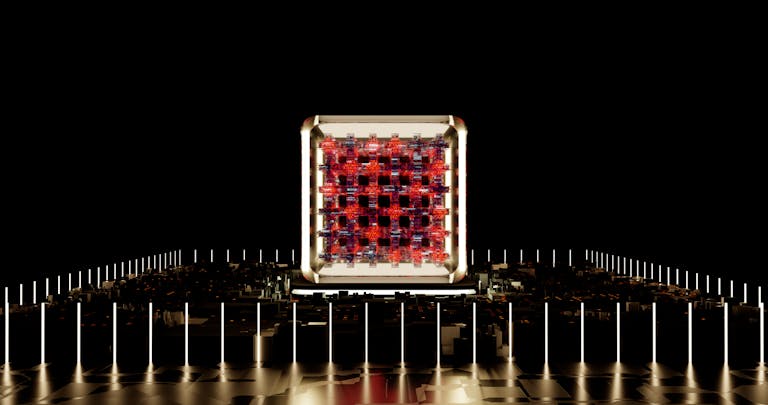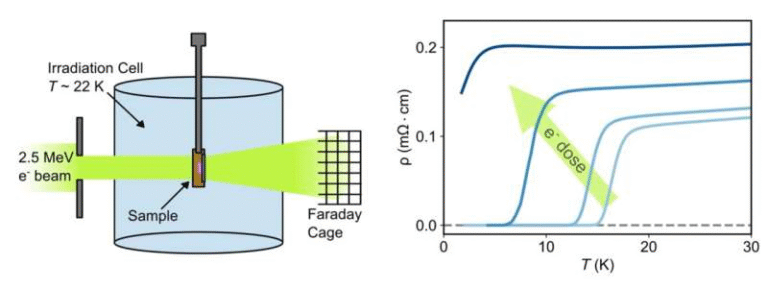X-Ray Microtomography Reveals the Hidden World Inside 3D Chaotic Microcavities

Three-dimensional optical microcavities might be tiny—often no wider than a human hair—but their internal geometry plays a major role in how light behaves inside them. A recent study has taken a major step forward in understanding these miniature structures by using X-ray microcomputed tomography, or µCT, to map their shape in extraordinary detail. This technique, commonly seen in medical imaging and materials science labs, has now been used to peer into the interior of a slightly deformed silica microsphere without cutting, polishing, or damaging it.
This matters because microcavities aren’t just scientific curiosities. These structures trap light and allow it to circulate millions of times, creating intense optical fields that power technologies such as high-precision sensors, microlasers, and emerging quantum devices. When a microcavity is perfectly round, the light inside behaves predictably, circulating in smooth whispering-gallery paths. But when the symmetry is disturbed even slightly, things get interesting. Light begins to follow chaotic trajectories, bouncing in unpredictable ways that can enhance performance in surprising directions—such as one-way emission, broader laser output, or stronger light-matter interactions.
Most previous research has focused on two-dimensional (2D) microcavities, like microdisks or flattened resonators. Their geometry can be measured under a microscope, which makes analysis easier. But true 3D microcavities, where the deformation occurs in all spatial directions, are more complicated. Their internal shape can’t be easily measured from the outside. You can’t just slice them open either—doing so completely disrupts the structure you’re trying to study. This has left a major gap in understanding how light behaves in realistic, three-dimensionally distorted cavities.
The new study, published in Advanced Photonics Nexus, tackles this problem head-on. The researchers used X-ray µCT to scan a deformed silica microsphere and reconstruct its full 3D shape with submicron precision. This is a significant achievement on its own. But once they had this detailed digital model, they took the next step: calculating how light would propagate inside the cavity’s actual geometry.
Their analysis revealed that when the microsphere is deformed in multiple directions—not just horizontally or vertically—the trapped light spreads throughout the entire cavity in a process known as Arnold diffusion. This effect has been theoretically predicted for decades in the field of 3D wave chaos, but this study provides some of the strongest experimental support yet. Instead of being constrained to simple circulating paths, the light explores vast regions inside the cavity over long timescales. This is a hallmark of true 3D chaotic dynamics.
The researchers say this opens up fresh opportunities across several fields in optics. Being able to measure and model 3D microcavities accurately means designers can push beyond traditional, symmetric cavities and deliberately harness chaotic effects. This could lead to high-sensitivity sensors, microlasers with broad spectral output, and optical networks that take advantage of chaotic pathways for greater complexity or robustness.
To fully appreciate why this is so impactful, it helps to understand more about what microcavities actually are.
What Microcavities Do
A microcavity traps light through total internal reflection, similar to how sound travels along the curve of a whispering gallery in a cathedral. When designed properly, a microcavity can support extremely high-quality optical modes with very low loss. This makes them invaluable for:
- Sensing: Even the tiniest change in the surrounding environment shifts the cavity’s resonance, enabling detection of nanoparticles, biomolecules, or temperature changes.
- Microlasers: Microcavities can confine light long enough that even very low pumping power triggers lasing.
- Quantum optics: By concentrating photons into a tiny volume, microcavities enhance interactions between light and quantum emitters such as atoms or quantum dots.
However, high symmetry isn’t always desirable. Slight deformation can break degeneracies, improve directional emission, or generate chaotic dynamics that distribute energy more uniformly.
This is why 3D deformed cavities—though harder to study—are so fascinating. They are a playground for exploring complex, nonlinear optical behavior.
Why Studying 3D Deformations Is Hard
A perfect sphere’s geometry is simple: every point on its surface is identical. But once you distort the shape—stretch it, compress it, or fuse it asymmetrically—the light’s behavior becomes sensitive to every tiny change. Measuring the exact shape is essential for accurate modeling.
Traditional optical microscopy only captures the external silhouette of the microsphere. It doesn’t show internal contours or subtle directional deformations. Electron microscopy requires coating or slicing the sample, which destroys the cavity or introduces artifacts.
That’s why using X-ray microtomography is such a clever solution. It’s totally non-destructive and captures internal and external features together, giving a full volumetric reconstruction. In this study, the reconstruction achieved submicron resolution, good enough to represent even small distortions that significantly alter light paths.
What the Researchers Found
With the complete 3D model in hand, the team computed how rays of light bounce inside the cavity. Because the cavity was deformed in multiple directions, the light did not follow simple loops. Instead, the trajectories filled large regions of the interior, confirming 3D chaotic spreading.
The key insight was that chaos does not arise just from any deformation. You need multi-axis asymmetry, meaning the cavity must be distorted in more than one direction. Otherwise, the system behaves more like a 2D cavity.
The observed behavior matched predictions from nonlinear dynamics, particularly Arnold diffusion, a process in which trajectories slowly drift across different regions of phase space. This is a rare and subtle effect, difficult to observe experimentally—another reason this study stands out.
Broader Impact and Future Possibilities
The experiment is not just about proving a theory. It has implications for real technology. Controlled 3D chaos inside microcavities could be used to engineer:
- Broadband microlasers where chaos prevents light from getting trapped in narrow spectral bands.
- Ultra-sensitive sensors that take advantage of chaotic field distributions for stronger interactions with their environment.
- Complex optical networks, where chaotic pathways can add redundancy or mixing behavior.
This technique also allows researchers to validate fabrication methods. Since the µCT scan reveals the exact cavity geometry, fabricators can adjust heating times, deformation angles, or material choices to fine-tune cavity performance.
It’s also likely that future work will explore different materials beyond silica—perhaps polymers, crystalline resonators, or semiconductor microcavities used in integrated photonics. The method scales well and could become a standard tool for verifying 3D cavity designs.
A Quick Look at Arnold Diffusion (For the Curious Reader)
Arnold diffusion comes from Hamiltonian chaos theory. In simple terms, it describes a system where motion can slowly “leak” from one region of allowed movement to another, even when the system looks mostly stable.
In microcavities, this means that light doesn’t stay confined to a neat circular orbit. Instead, tiny deviations accumulate, and the light gradually explores larger and more complex paths.
This spreading can be beneficial. It helps distribute energy more evenly, enhances interactions, and enables design features that symmetric cavities can’t achieve.
Final Thoughts
This research pushes optical microcavity studies into the fully three-dimensional regime with unprecedented detail. By pairing high-resolution X-ray tomography with advanced ray-dynamic modeling, the team has demonstrated that genuinely 3D chaotic behavior is not just theoretical—it’s observable, measurable, and potentially exploitable.
This marks an exciting step for anyone interested in photonics, nonlinear dynamics, or the future of miniaturized optical devices. As imaging and fabrication tools continue to improve, we’re likely to see even more surprising behaviors emerge from these deceptively small structures.
Research Paper:
https://doi.org/10.1117/1.apn.4.6.066006





